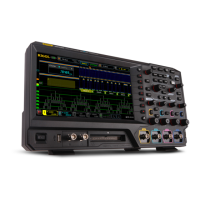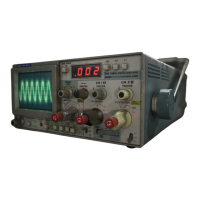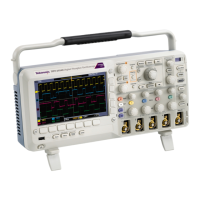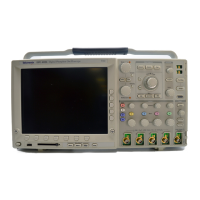Command Syntax
When concatena
ting commands and queries, you must follow these rules:
1. Separate completely different headers by a semicolon and by the beginning
colon on all co
mmands except the fi rst one. For example, the commands
TRIGger:MODe NORMal and ACQuire:NU MAVg 10, can be concatenated
into the following single command:
TRIGger:MODe NORMal;:ACQuire:NUMAVg 10
2. If concaten
ated commands have headers that differ by only the last mnemonic,
you can abbreviate the second command and eliminate the beginning colon.
For example, you can concatenate the commands
ACQuire:MODe ENVelope
and ACQuire:NUMAVg 10 into a single command:
ACQuire:MODe ENVelope; NUMAVg 10
The longer version works equally well:
ACQuire
:MODe ENV elope;:ACQuire:N UMAVg 10
3. Never precede a star (*) command w ith a colon:
ACQuire:MODe ENVelope;*OPC
Any commands that follow will be processed as if the star command was not
there so the commands,
ACQuire:MODe ENVelope;*OPC;NUMAVg 10 will
set the acquisition mode to envelope and set the number of acquisitions for
aver
aging to 10.
4. When you concatenate queries, the responses to all the queries are
con
catenated into a single response message. For example, if the display
imageview color is temperature and the display recordview color is spectral,
the concatenated query
DISplay:COLOr:PALETTE:IMAGE VIEW?;
RECORDVIEW?
will return the following.
If the header is on:
:DISPLAY:COLOR:PALETTE:IMA GEVIEW TEMPERATURE;
:DISPLAY:COLOR:PALETTE:REC ORDVIEW SPECTRAL
If the header is off:
TEMPERATURE;SPECTRAL
5. Set commands and queries m ay be concatenated in the same message. For
example,
ACQuire:MODe SAMple;NUMAVg?;STATE?
is a valid message that sets the acquisition mode to sample. The message then
queries the number of acquisitions for averaging and the acquisition state.
Concatenated commands and queries are executed in the or der received.
DPO7000, DPO70000/B and DSA7000/B Series Programmer Manual 2-5
